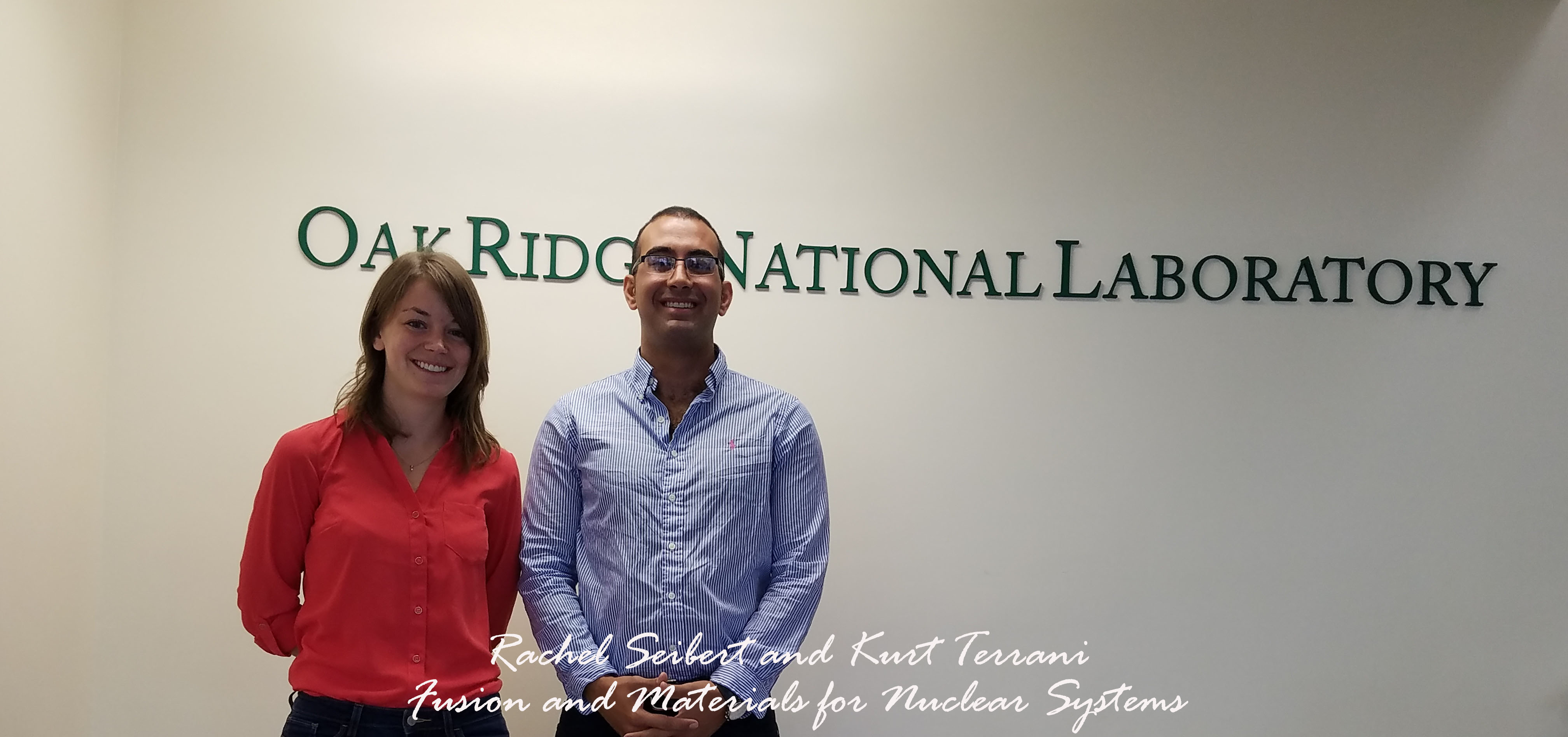Rachel Seibert, a Ph.D. candidate in condensed matter physics, won second place in a research poster competition at Oak Ridge National Laboratory (ORNL) for her work on the silicon carbide (SiC) layers in tri-structural isotropic (TRISO) fuels. Seibert analyzed the integrity of TRISO nuclear fuel particles under normal and accident conditions, contributing new knowledge about how to modify the SiC layers in order to make them safe under all reactor conditions.
The competition was part of Seibert’s 10-week summer internship with ORNL’s Nuclear Engineering Science Laboratory Synthesis (NESLS) program. She worked with Kurt Terrani, staff scientist and Weinberg fellow, who is an expert in nuclear fuel development and testing. Her adviser at Illinois Tech is Jeff Terry, professor of physics.
TRISO consists of a spherical uranium carbide kernel coated with a carbon buffer layer, two pyrolytic carbon layers, and the SiC layer. The coating layers create a closed environment so that each particle acts like its own pressure vessel to keep fission products contained during irradiation. The SiC layer is the structural backbone and main barrier to fission product release.
Scientists are interested in TRISO fuels for next-generation nuclear reactors. But certain metallic fission products diffuse through these layers and out into the reactor, which is potentially hazardous to workers during maintenance. Others such as palladium may locally corrode the SiC. Scientists need to determine the reaction mechanism for these interactions under normal operation and at elevated temperatures to simulate nuclear reactor accidents.
To do this, Seibert used high-resolution transmission electron microscopy (TEM) and scanning TEM to study how these fission products interact with SiC isolated from irradiated TRISO particles, getting detailed images about the microstructure and dispersion of fission products in SiC. Simultaneously, she also used energy dispersive x-ray spectroscopy (EDS) for elemental mapping and identification at the same location the images were taken.
“If we know where and how fission products are grouped in the irradiated SiC, we can use this information, in addition to information from other ongoing studies, to gather a big picture of what happens during irradiation and safety testing,” Seibert said. “It will help us to understand how to modify the SiC layers in order to make them inherently safe under all hypothesized reactor conditions.”

Photo: Amy Hunt (ORNL)
